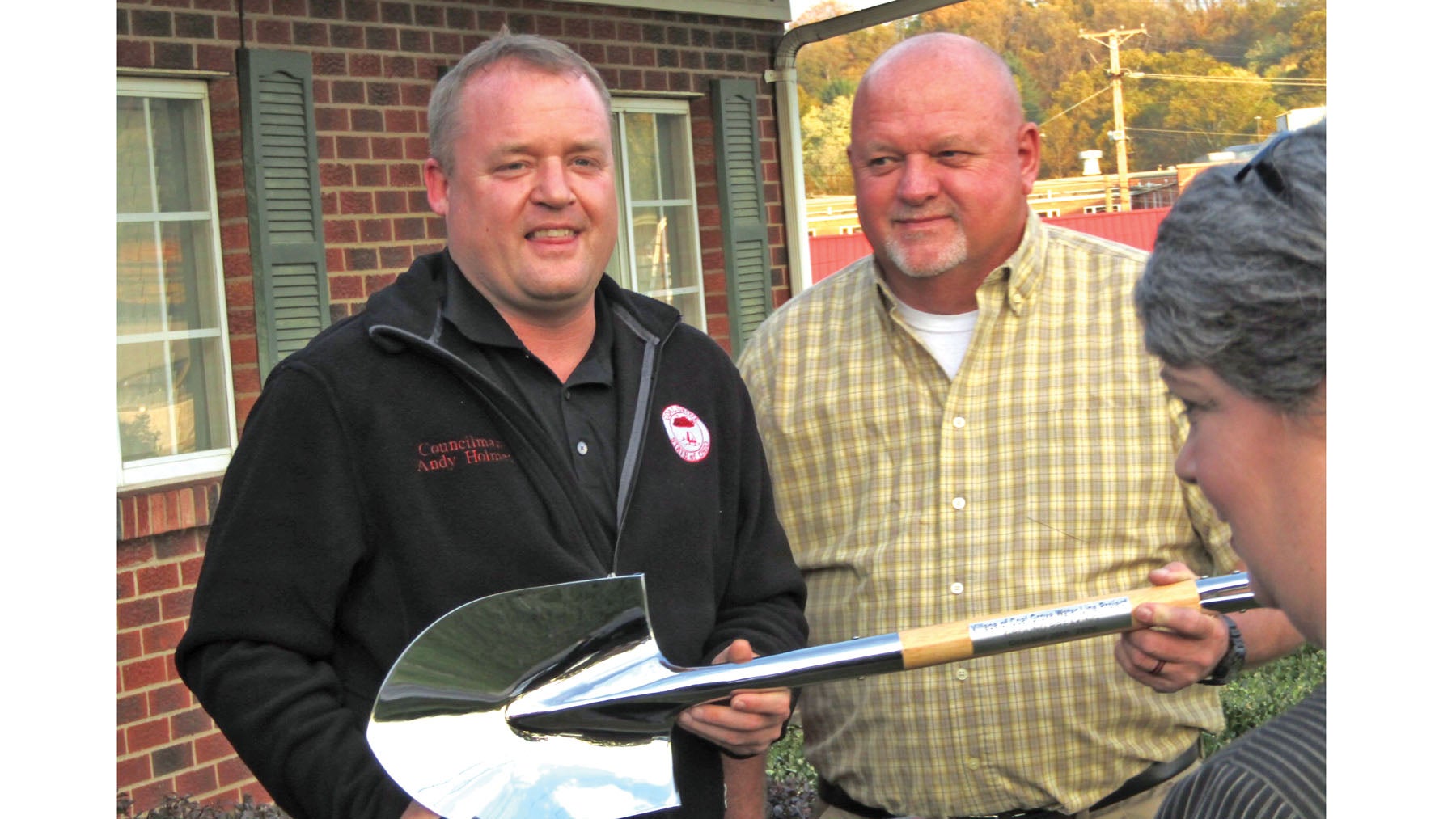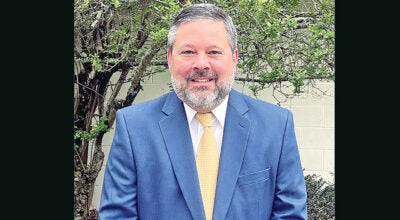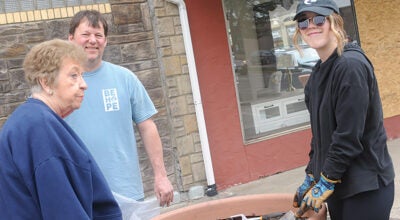Ground broken on Coal Grove water project
Published 12:00 am Saturday, October 24, 2020

- The village of Coal Grove hosted a groundbreaking ceremony on a $6 million water line replacement project on Tuesday. (The Ironton Tribune | Austin Johnson)

Coal Grove council member Andy Holmes, left, and mayor Gary Sherman take part in a groundbreaking ceremony. (The Ironton Tribune | Austin Johnson)
By Austin Johnson
The Ironton Tribune
COAL GROVE — The village of Coal Grove hosted a groundbreaking on Tuesday for a much-anticipated water line replacement project.
“I’m thankful for the previous council and mayor who began this project and I’m grateful for the opportunity to be a part of the council to bring the water project to fruition Council member Robin Heaberlin said at the ceremony, which took place at village hall. “The people of Coal Grove deserve clean water and were excited to see that happening.
Council member Andy Holmes said the village submitted a $4.2 million project to the EPA and was approved to matching 50 percent principle forgiveness. They borrowed $2.1 million at zero percent interest over 30 years.
Holmes said they got additional grants and, for every dollar in grants it would offset 50 cents on the loan.
Village engineer Kevin Wood said the village received a $250,000 grant from the Appalachian Regional Commission and $750,000 in Community Block Development Grants, as well as $400,000 from the Ohio Public Works Commission.
He said the total project cost is $5,778,316, for all design and construction costs.
With the pipes inside the village being both “undersized and well beyond their useful life,” the council agreed changes need to be made.
“We’re finally going to solve an issue of dirty water that we had for a number of years,” Mayor Gary Sherman said. “We will finally have good clean water.”
Sherman it’s not supposed to impact the water supply too much and that there will be intermediate shut offs during the day as they work to replace the old system.
Holmes said this is extremely good news for the residents of Coal Grove.
“This is something the community has demanded over the years that they would like to see improved and upgraded,” Holmes said. “It truly is a day of celebration for the village.”
Holmes said there will be some things that they will not be able to help, but will keep the worries in mind “With any kind of project like this, we got it on paper of how it will proceed, but it doesn’t always go as planned.”
“It’s just a matter of where that project is that day,” he said. “We do hope the community understands that this type of progress is going to require a little bit of patience. There will be some traffic issues. We’re going to do our best to alleviate those and try to stay out of the main drags at 8 a.m. and around 3 p.m., when school lets out.”
When completed, the new system will help village workers do other things besides reading water meters. Currently, the village spends 120 man hours a month reading meters.
With this project going forward, Holmes said they now look to accomplish this in about five or six hours.
“Along with this project, we will utilize radio read meters, currently we have manual read meters,” he said.
Radio read meters will allow village vehicles to “drive by and get within so many feet” to read the meter, allowing more hours to be spent doing things like cutting grass and maintaining the flower beds around the village.
— Additional reporting by Heath Harrison





